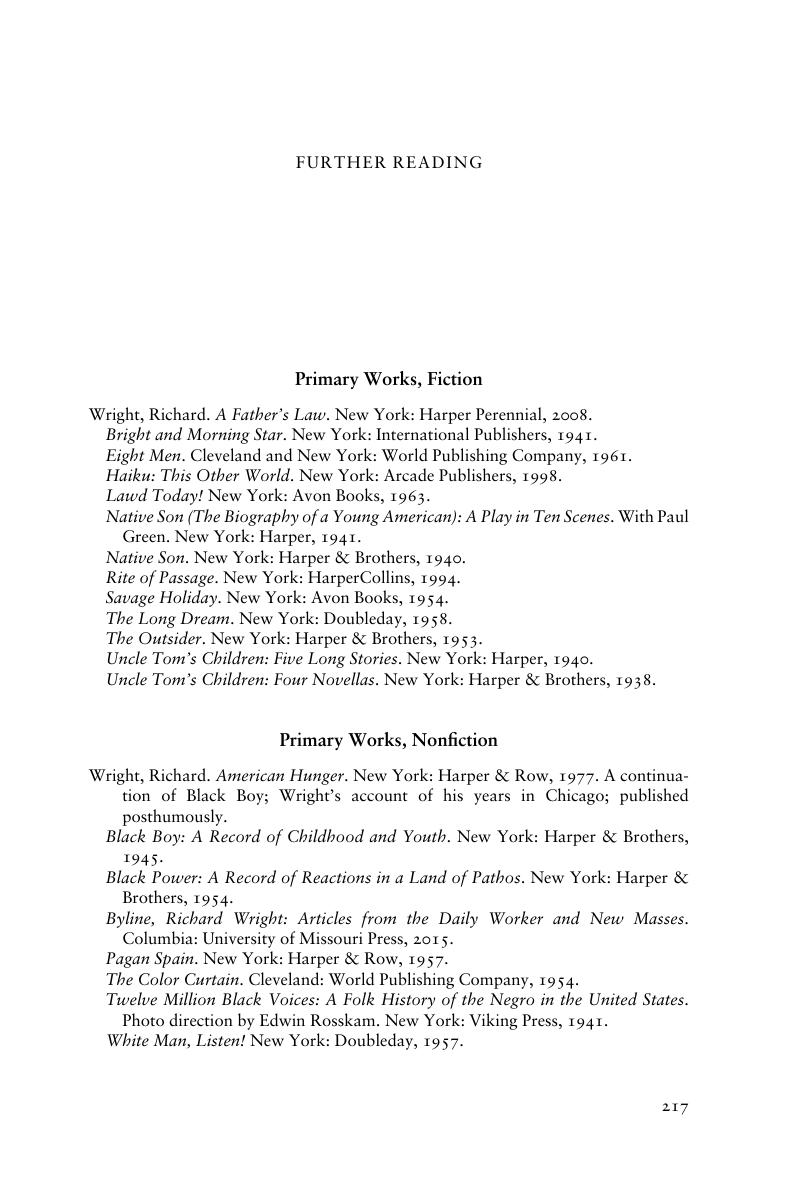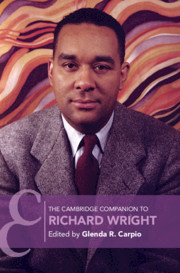Book contents
- The Cambridge Companion to Richard Wright
- The Cambridge Companion To Richard Wright
- The Cambridge Companion to Richard Wright
- Copyright page
- Dedication
- Contents
- Contributors
- Acknowledgments
- Chronology
- Introduction
- Part I Native Son in Jim Crow America
- Part II “I Choose Exile”
- Further Reading
- Index
- Cambridge Companions to …
- References
Further Reading
Published online by Cambridge University Press: 07 March 2019
- The Cambridge Companion to Richard Wright
- The Cambridge Companion To Richard Wright
- The Cambridge Companion to Richard Wright
- Copyright page
- Dedication
- Contents
- Contributors
- Acknowledgments
- Chronology
- Introduction
- Part I Native Son in Jim Crow America
- Part II “I Choose Exile”
- Further Reading
- Index
- Cambridge Companions to …
- References
Summary

- Type
- Chapter
- Information
- The Cambridge Companion to Richard Wright , pp. 217 - 226Publisher: Cambridge University PressPrint publication year: 2019



